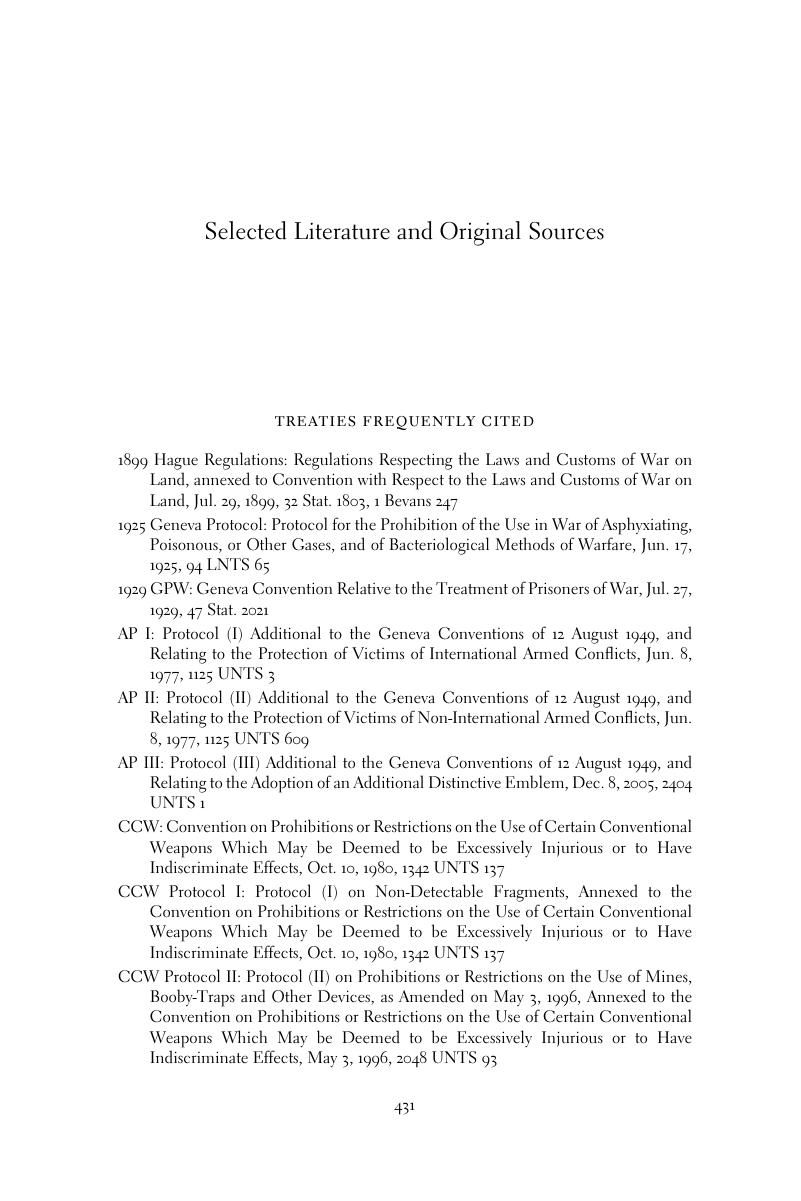Book contents
- The United States Department of Defense Law of War Manual
- The United States Department of Defense Law of War Manual: Commentary and Critique
- Copyright page
- Contents
- Notes on Contributors
- Abbreviations
- Part I Background and Bureaucratic Formation of the Manual
- Part II Prominent Perspectives on the DoD Manual
- Part III Substantive Contributions and Controversies
- Part IV The Manual’s Long-Term Prospects and Implications
- Selected Literature and Original Sources
- Index
- References
Selected Literature and Original Sources
Published online by Cambridge University Press: 11 January 2019
- The United States Department of Defense Law of War Manual
- The United States Department of Defense Law of War Manual: Commentary and Critique
- Copyright page
- Contents
- Notes on Contributors
- Abbreviations
- Part I Background and Bureaucratic Formation of the Manual
- Part II Prominent Perspectives on the DoD Manual
- Part III Substantive Contributions and Controversies
- Part IV The Manual’s Long-Term Prospects and Implications
- Selected Literature and Original Sources
- Index
- References
Summary

- Type
- Chapter
- Information
- The United States Department of Defense Law of War ManualCommentary and Critique, pp. 431 - 452Publisher: Cambridge University PressPrint publication year: 2019



